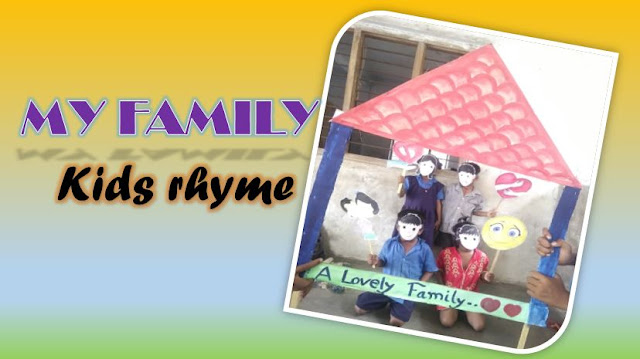My Lovely Family Rhyme - Innovative transaction
Topic: My Lovely Family Rhyme.
Grade: Preprimary and 1st grade.
Skills: Listening and Creative Expression.
Children love rhymes and also the repetition of words, ideas, and skills are important for early brain development, as it creates secure foundations for early learning. Using rhyme, rhythm and repetition in song, while reading or even to make up your own rhymes, is great fun for children.
Children will dramatize rhymes to develop language, literacy, creative thinking, and social skills. Most children enjoy hearing and participating in rhyming activities, and when they are exposed to rhyming, they usually pick it up naturally.
So I always play my lesson/rhyme in a meaningful and enjoyable way. Here is my tiny attempt of a rhyme "My lovely family" which was given in the 1st-grade textbook.
The rhyme is...
He is, he is, he is,
He is my caring father,
She is, she is, she is,
She is my loving mother,
We are, we are, we are,
A lovely family we are.
He is, he is, he is,
He is my sharing brother,
She is, she is, she is,
She is my smiling sister,
We are, we are, we are,
A lovely family we are.
So I prepared flash cards to make them understand the meaning of the words, caring, loving, sharing and smiling. And also prepared masks of family members to enjoy the rhyme. I made them practice and read the words well before choreographed the rhyme. Flashcards helped them to understand the meanings of the words and get the rhyming easily.
"Caring father"
"Loving mother"
"Sharing brother"
"Smiling Sister"
"A lovely family"
Watch the video:
I will post related speaking and writing activities on this topic in my next post. I hope you enjoy the rhyme.









Comments